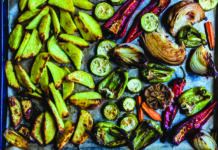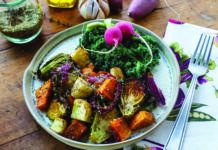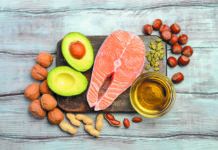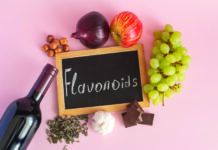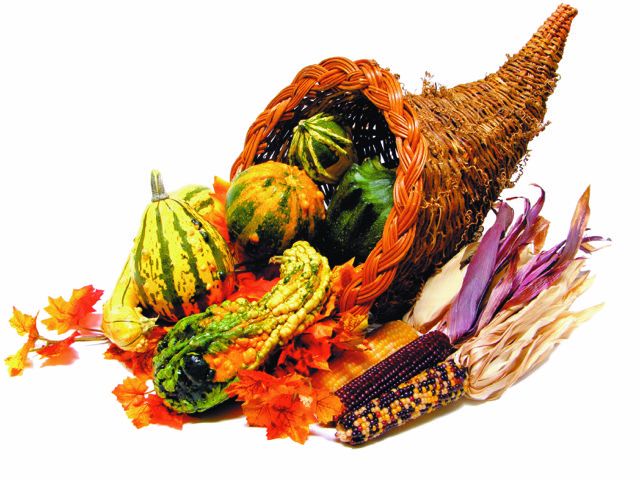Foods like sweet potatoes, corn, and pumpkin are regulars on our Thanksgiving tables. Let’s take a closer look at some of the delicious, versatile, healthy choices that are native to the continent we call home.
Potatoes. Potatoes grew wild in large portions of the Americas. The Incas are
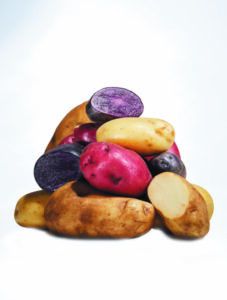
thought to have begun cultivating them in South America as early as 1,800 years ago. Now the most consumed vegetable in the United States, potatoes, classified as a strachy vegetable, are unfortunately less nutritious than non-starchy vegetables. Still, one medium baked potato (skin on) can provide 30 percent of your vitamin C for the day, 25 percent of your potassium, and 14 percent of your dietary fiber. Potatoes with colored flesh are a more nutrient-rich choice than white. Purple-, gold-, and red-fleshed potatoes have more phytochemicals than white, and sweet potatoes and yams are an excellent source of beta-carotene.
If you put potatoes on your table this Thanksgiving (or any other time of the year), count them as a starch, not a vegetable, avoid drowning them in saturated fat, sugar, and salt, and be sure to eat the fiber-rich skin.
Corn. Botanically a fruit, corn is classified as a starchy vegetable when fresh and a
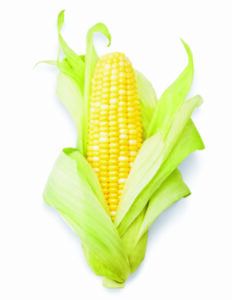
grain after drying (as in popcorn, cornmeal, and corn grits). Corn provides fiber and is a good source of thiamine, folate, vitamin C, magnesium, and potassium, but should be counted as a starch on your plate, not a veggie.
Corn’s long culinary history in the Americas may be one reason corn and corn bread dishes are popular Thanksgiving sides.
Squash. Pumpkins, which are native to North America, are a seasonal icon, but
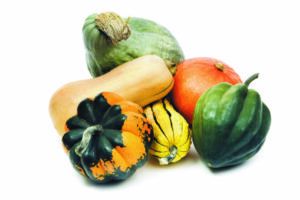
there are many other winter squash, like butternut, acorn, delicata, Hubbard, kabocha, and spaghetti squashes, that can bring color and nutrition to your fall and winter table. They provide vitamins A and C, potassium, and fiber. Roast the seeds for a snack or topping rich in fiber and healthy unsaturated fats, vitamin E, and iron.
➧ Maximize Nutrients. Keep the skin on potatoes and go for a bit of phytochemical-rich color by serving orange, purple, red, or gold-fleshed varieties. ➧ Minimize Saturated Fats. Swap saturated fat for heart-healthy unsaturated by making roasted potatoes instead of mashed, grilled or pan-seared corn instead of creamed, and steamed, roasted, or sautéed string beans topped with a sprinkle of almonds instead of creamy casserole. ➧ Squash It! Squash is a nutritious and delicious choice as a soup or mashed or roasted side, not just as a dessert pie. ➧ Go to the Dark Side. For a dessert treat, go for fruit dipped or drizzled in a bit of dark chocolate instead of sugary chocolate cakes or brownies.
Cacao. Cacao beans, the basis for chocolate, are native to Central America. In some
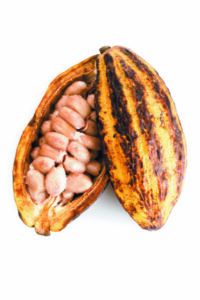
ancient American cultures, the beans were as valuable as gold. They were used to make a bitter drink the Maya people called “the drink of the Gods” that took Europe by storm in the late 1500s. Sweetened chocolate bars did not appear until the mid-to-late 1800s. The savory uses of cocoa are evident in dishes like mole sauce, which often includes cocoa powder.
Chocolate developed a “health halo” after it was found to contain phytochemicals with antioxidant and anti-inflammatory properties, but any benefits from eating chocolate are likely outweighed by the added sugars in candy and the refined carbohydrates in cakes and cookies. Experts recommend getting your chocolate fix with small amounts of dark chocolate (at least 50 percent cocoa solids), which has higher concentrations of phytochemicals than milk chocolate.
Beans. Beans are carbohydrate foods that are a good source of protein and fiber.
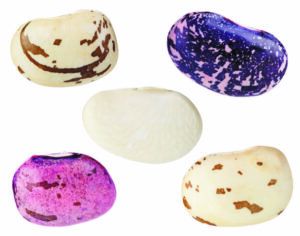
Legumes (beans and lentils) are important protein sources in plant-based dietary patterns. They are also extremely versatile choices, starring in everything from Mexican rice and beans to Texas chili to Mediterranean hummus and falafel.
Green beans—which originated in South and Central America—are legumes, but not actually beans. If creamy green beans with processed fried onions on top is your Thanksgiving go-to, try recipes that roast, steam, or sauté instead, or take only a small portion of the creamy casserole to limit saturated fat, sodium, and calories.
Tomatoes. Native to South America, tomatoes are rich in vitamin C, folate,

potassium, and the phytochemical lycopene.
Tomatoes belong to the same plant family as the deadly belladonna nightshade. Today, some sources recommend avoiding foods in the nightshade family (which also includes eggplant, potatoes, and peppers), but there is no scientific evidence that these foods have any negative health effects.
Eating cooked tomato products has been associated with lower risk for prostate cancer, but supplements have not. A trial examining the effect of tomato extracts and lycopene supplements on blood levels of prostate-specific antigen (PSA) (a measure that can help detect prostate cancer) showed no benefit.
Tomatoes may not feature in many traditional Thanksgiving foods, but they are a versatile and nutritious option all year long.
Chili Peppers. Different varieties of these Central or South American natives have
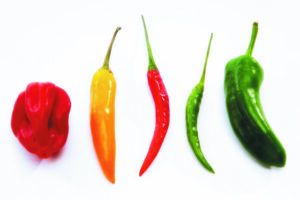
different levels of heat (quantified using the Scoville Heat Unit Scale, invented in 1912 by pharmacist Wilbur Scoville). Although they are rich in vitamins, minerals, and phytochemicals, including vitamin C, hot peppers are eaten in small quantities, so they don’t contribute significant nutrients to an overall dietary pattern.
If your family likes heat, roast some poblano peppers with brussels sprouts or chop some jalapeños into your corn bread this Thanksgiving.
Foods native to the Americas, like squash and corn, can make a healthy addition to your Thanksgiving table.


